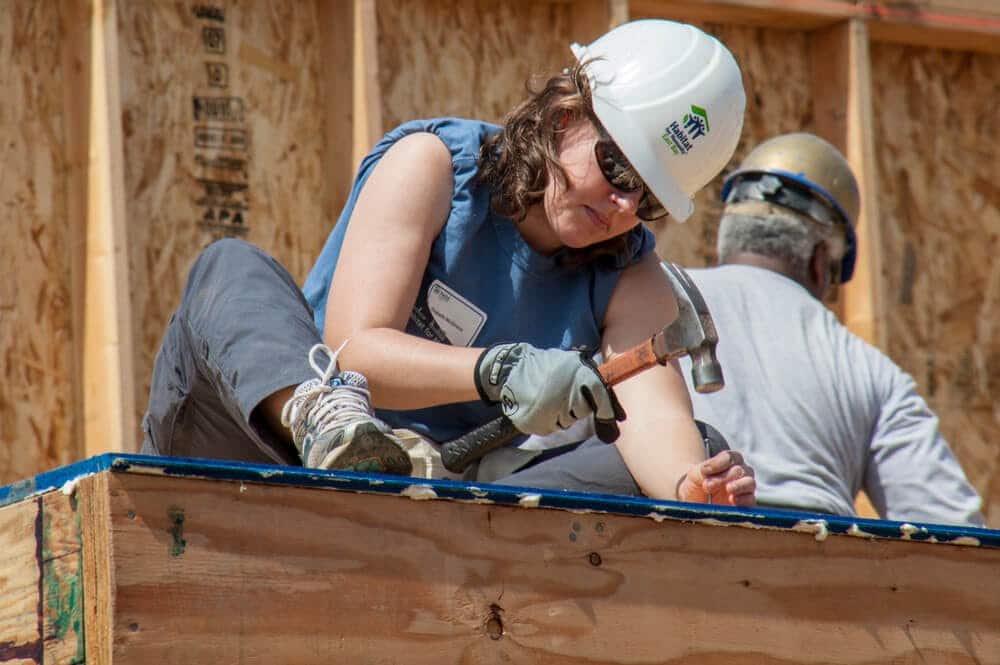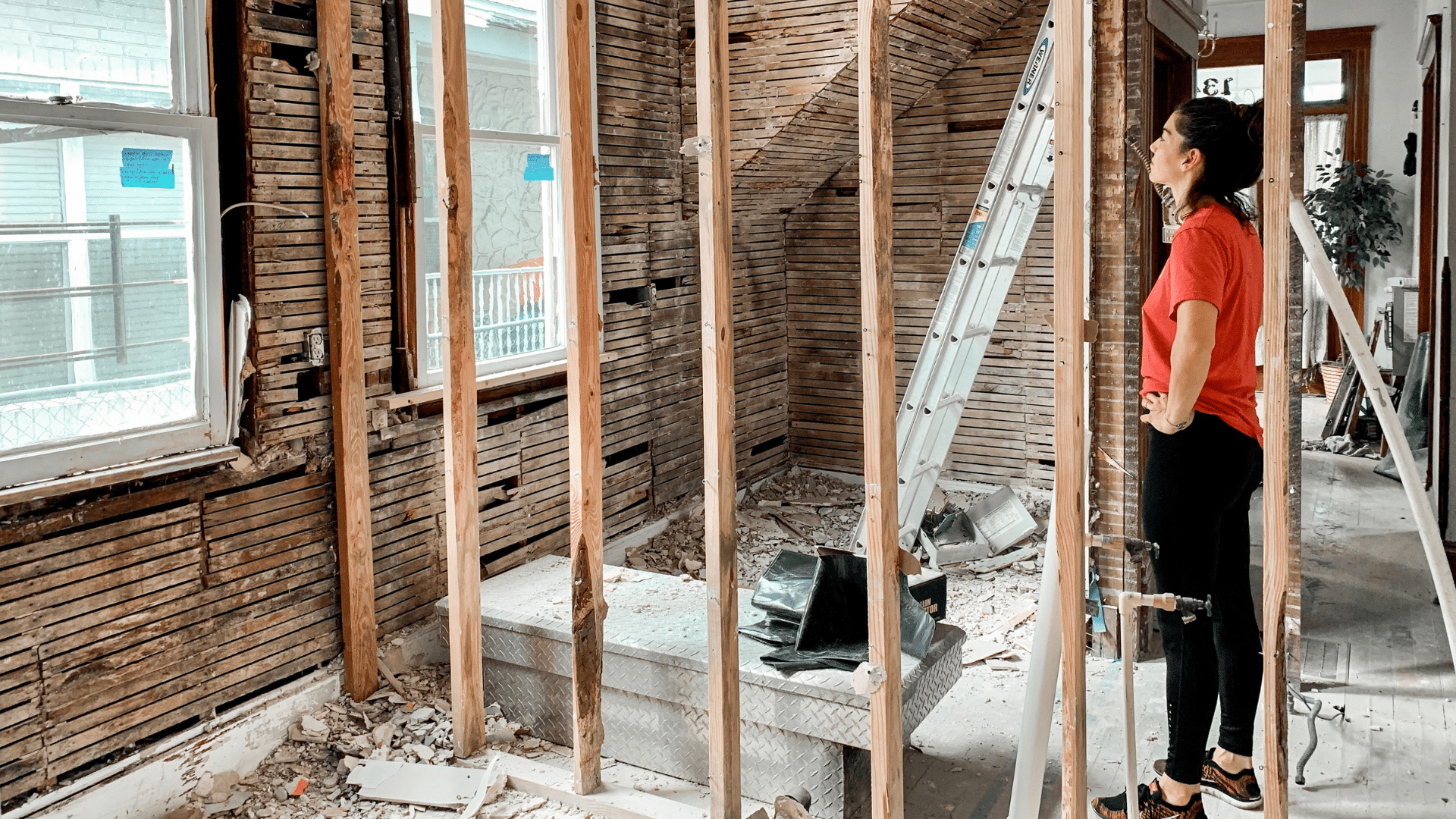This article may contain affiliate links. We may receive a commission for purchases made through these links. Privacy Policy.
One drawback to owning a home, things will eventually break or need repair. Plumbing issues, a leaky roof, worn-out appliances and structural damage are just a few of the realities of homeownership. As homes age, things will need to be replaced or repaired.
There will also be events outside of your control that will have repair costs associated with them. Many of these repairs can cost a lot of money that you will need to shell out to fix.
Luckily, there are options to help with paying for these repairs. Here are 7 tips on how to pay and help in paying for costly home repairs.
Having an Emergency Repair Fund

One of the first and easiest ways to pay for home repairs is to have an emergency repair fund. Setting money aside each paycheck in a separate account can help you save money for emergency expenses. The average emergency expense averages about $2,000. Having at least that much money saved up will help to keep you from going into debt.
The good rule of thumb for an emergency fund is figuring how much money you need for essentials (food, utilities, etc.). Your emergency fund goal should be enough money to cover these expenses for three to six months. This will give you enough finances for most emergencies that come along.
For some, they may have an emergency hit before they have the finances saved up. Or maybe you don’t have an emergency fund set up at all. Luckily there are many options still available, some which won’t require you to pay back borrowed money.
Home Equity Line of Credit
A Home Equity Line of Credit (HELOC) is one way to use the equity of your home to get emergency funds. Home equity loans let you use the value of your home to get money for home repairs when you are in a pinch. Equity is the difference between what you owe on your home versus the value. The longer you’ve lived in your home, the more equity you have access too. If you are a relatively new homeowner or if you have a negatively impacted credit score, this might not be your best option.
Related: 11 Tips For First-Time Homebuyers [From 10 Experts]
A HELOC is an excellent choice for home repairs, remodels and improvements, as well as paying for unexpected expenses. Make sure you can pay back the loan in a timely manner, as you risk losing your home if you cannot pay. While this can be scary for some, the interest rate on this type of line of credit will be much lower than if you tried to access a personal loan for the same project.
Homeowners Insurance Claim

Your homeowner’s insurance can be a lifesaver when it comes to repairs on your home. While you may have to pay a premium, once you have taken care of your share of the cost (usually less than $2,000), the insurance company will take care of the rest. Depending on your coverage, you may not have to spend any money out of pocket for certain repairs; replacing your roof after a storm, for example, may not cost you anything with your insurance.
Make sure to use your homeowner’s insurance wisely. Use it for significant repairs or emergencies, as some insurance companies may raise your premiums depending on the frequency or cost of claims. That being said, using your homeowner’s insurance can save you a ton of money in certain situations.
You may even consider adding home warranty coverage to help limit what hits your homeowners’ insurance.
Disaster Relief

If your home is damaged from a natural disaster such as tornadoes or floods, your homeowner’s insurance may not cover it. Many times homeowners must purchase extra coverage for these events. Luckily, several organizations can provide funds in these events. The Red Cross uses donated money to help families in repairing damage to their homes. The Federal Emergency Management Agency (FEMA) can also provide funds to homes struck by natural disasters. These funds help to fix safety and sanitation issues to make a home liveable, but will not pay to restore it to pre-disaster conditions.
Cash-out Refinance
One of the last financing options for many homeowners is a cash-out refinance. This allows you to refinance your mortgage for more than you need for your original home debt. That extra money can then be used for home improvement projects, necessary repairs, a new roof or a renovation project.
While this can be a good option for gaining funds quickly, there are some drawbacks to this method. It may increase the life of your mortgage and increase your overall debt depending on how much you borrow. You also may have to pay closing costs out of pocket, and it may take time to shop around for the best rate, so if you need funds in a hurry, this may not be the best method.
Related: Mortgage Refinancing Advice From 9 Finance Experts
Credit Card

During a financial emergency, many people’s first instinct may be to use their credit card and pay off the funds later. If you can’t wait for refinancing to go through, or you have concerns about bad credit, using what you already have access to is appealing.
While this may seem like a good way to access emergency funds quickly, there are several drawbacks to this method. Your credit card may not cover all of the expenses for your repairs, causing you to have to borrow more funds from another source.
If you have trouble paying more than your minimum payments on your credit card or have a high-interest rate, you may find yourself in more financial trouble. If you are unable to pay off what you borrowed in a quick amount of time, you may find yourself paying more in interest, or still paying off the debt when the next emergency hits.
Non-Profit Organizations

A final resource for gaining funds for home repairs are non-profit organizations. Many of these organizations, such as Habitat for Humanity, work to repair and rebuild homes damaged by disasters and to help people to find housing. Religious groups and community organizations can also lend a hand if you find yourself in a financial bind.
An added benefit of using these organizations is that they may inspire you to help others. These organizations often work with volunteers, so paying it forward after your time of need is a great way to give back to your community that helped you out.
And while not technically a non-profit, the Department of Housing and Urban Development is an excellent resource for federal loan programs, community resources and consumer information that can make the whole process easier.
Homeownership is a great accomplishment for many. As wonderful as it is, there are things that you will have to pay for that you may not expect.
With these tips, you will find yourself prepared when accidents happen and not go broke in the repair process.
Happy Homeownership!
You might also be interested in: Mortgage Refinancing [The Definitive Guide]
Brady Smith
view postBrady Smith
Brady is a writer, voice artist, podcaster and website designer. He holds a Bachelor’s Degree in Communication and specializes in crafting effective messaging designed to get results. Brady makes his home on the edge of society - close enough for good WiFi, but far enough out to not have to worry about traffic.
view post







